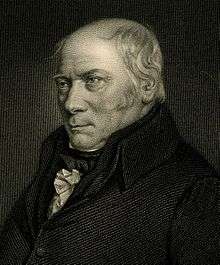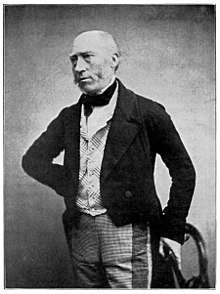Anne Phillips (geologist)
Anne Phillips (1803–1862) was an English geologist.[1]
Early life

Anne Phillips was born in Midford, Somerset, England, in 1803 to Elizabeth and John Philips.[1] Anne's father worked as an excise officer, and her mother had three brothers: William Smith (a notable geologist), Daniel Smith, and John Smith.[1]
Anne Phillips was orphaned in 1808.[1] She had two older siblings: John and Ann Phillips.[1] John Phillips was born in 1800 in Marden, Kent, England. In 1801, Ann Phillips was also born in Marden, however she died in infancy.[1] Following Ann's death, the family moved to Midford, Somerset, and they are believed to have stayed at a property, Tucking Mill House, owned by Elizabeth's brother, William Smith. After Anne's birth in 1803, the family moved to Steeple Aston, Oxfordshire. Anne's younger brother, Jenkin, was born in 1806.[1] Following Jenkin's birth, the family moved to Coventry, West Midlands.[1]
John Phillips died in Coventry in January.[1] Elizabeth passed away in July after the family moved to Elizabeth's hometown of Churchill, Somerset.[1] Subsequent to her death, Elizabeth's brothers took care of the orphans.[1] Daniel Smith looked after Jenkin, while William Smith cared for John and Anne.[1] In 1809, William Smith took John and Anne to Broadfield Farm, which was owned by John Smith.[1]

Scientific contributions
Anne Phillips’s most notable geological achievement was the discovery of a conglomerate, also known as Miss Phillips conglomerate. It proved the idea of how the rocks in the Malvern Hills were initially moulded, and how the Silurian Sediments were positioned by an ancient sea that broke down due to the Malvern’s igneous shores.[2] This was a major geological contribution as is resolved the mystery at the time of the origin of these hills. The conglomerate provided an anti-murchisonian theory (a belief that the Malvern Hills were younger than the Silurian Sediments). Phillips was not publicly recognized for any further discoveries, however, in letters penned to her by her brother, she was applauded and thanked for her assistance in his work. In the letters, he asks for geological help and refers to the work she did for his Guide to Geology, as he goes on to say that it was 'Your Little Book'.[3]
Death and legacy
Over the course of her life, Anne Phillips acted mainly as John's geological assistant. John's letters presented evidence for Anne’s intellectual accomplishments by asking about the details of geologic studies with the use of his drawings and requests for her applied geological assistance. His requests often included having Anne send boxes of fossils to his office in London or colouring detailed maps for his novels. Her contributions assisted John in his geologic endeavours. John is publicly grateful towards his sister as he states in 1838 “Whatever I possess is as much yours as mine, for without you I should not have won it [2]." Towards the end of 1862, Anne Phillips moved to a household that was rented by her brother, where she aided him by sorting and cataloging the fossils and minerals he collected.
Anne passed away in 1862, where she is buried alongside with her brother, John Phillips, in the city of York.[2] The Hope Library at the Oxford University Museum of Natural History holds 234 letters sent between John Phillips and Anne Phillips.[2]
References
- 1 2 3 4 5 6 7 8 9 10 11 12 13 Morrell, Jack (2016). Routledge Revivals: John Phillips and the Business of Victorian Science. London: Routledge. ISBN 9781315445076.
- 1 2 3 4 Morgan, N. (2007-01-01). "Anne Phillips: John Phillips's geological companion". Geological Society, London, Special Publications. 281 (1): 265–275. doi:10.1144/SP281.16. ISSN 0305-8719.
- ↑ Morgan, Nina. "Anne Phillips and the Mystery of the Malverns".